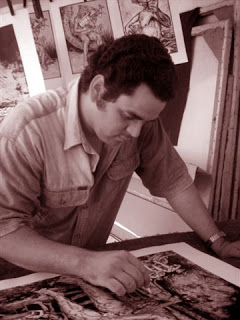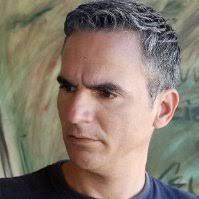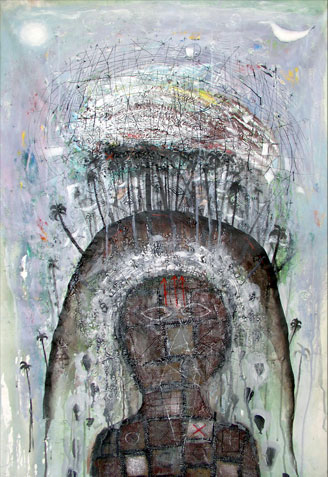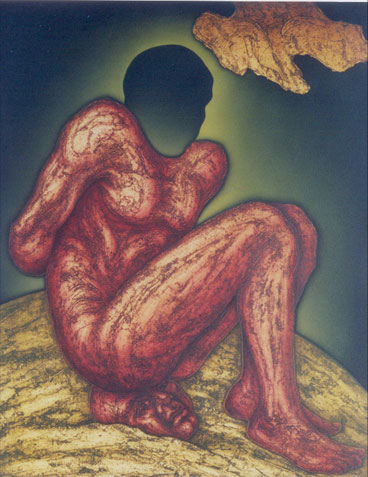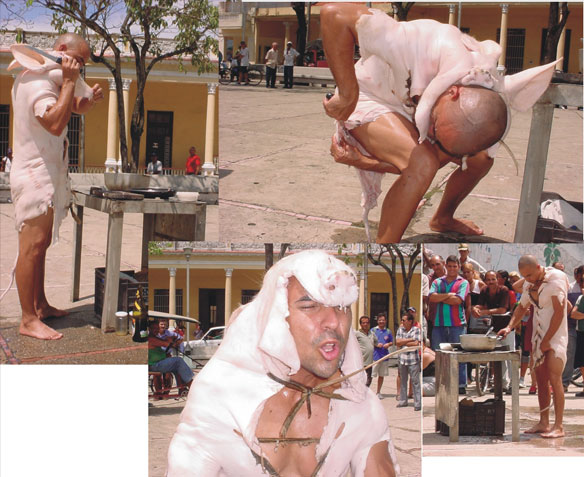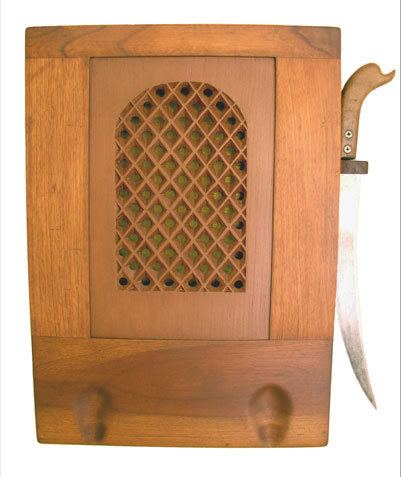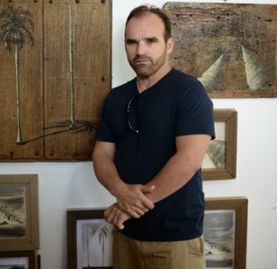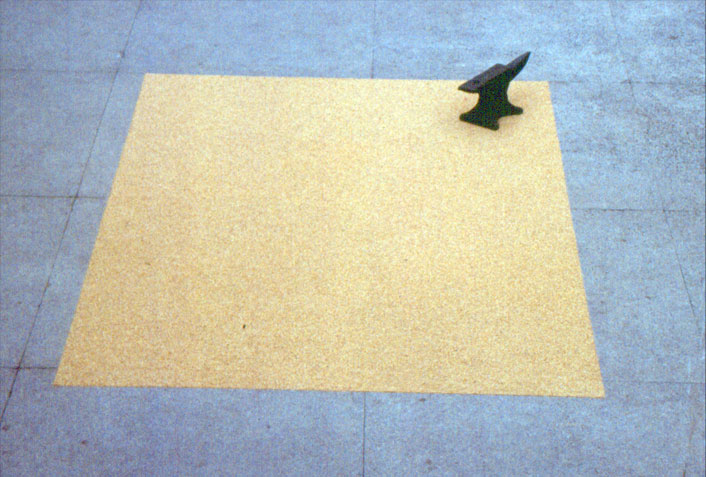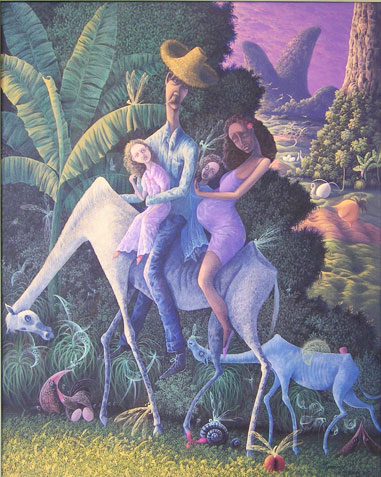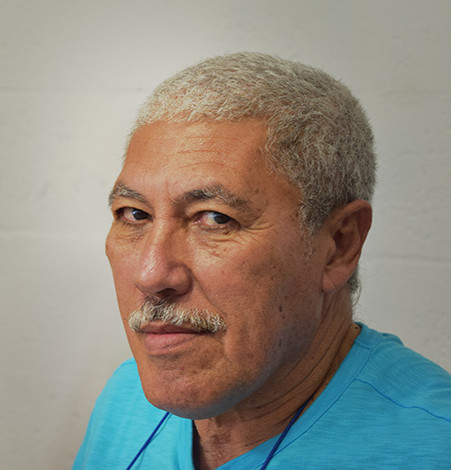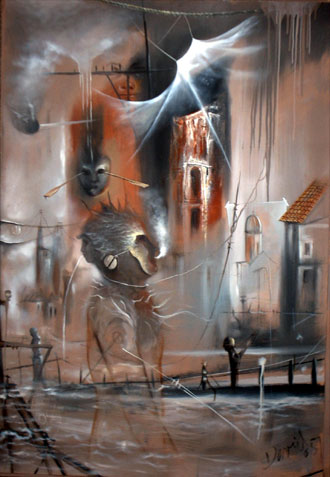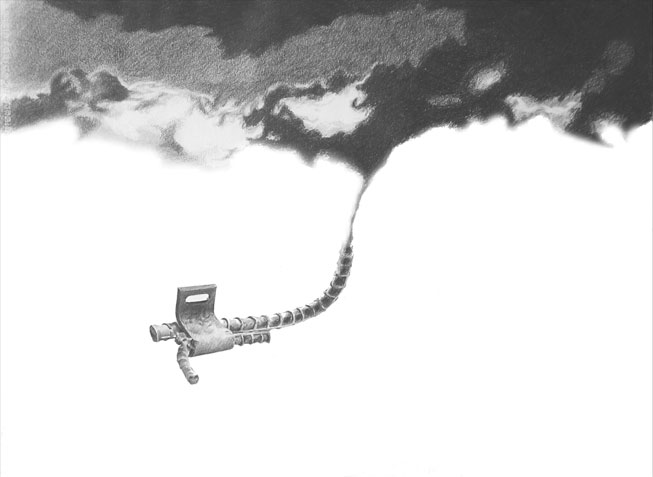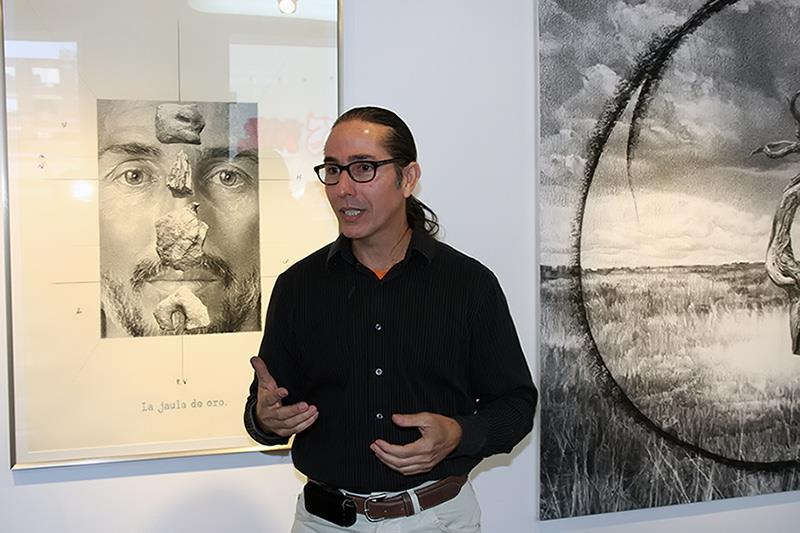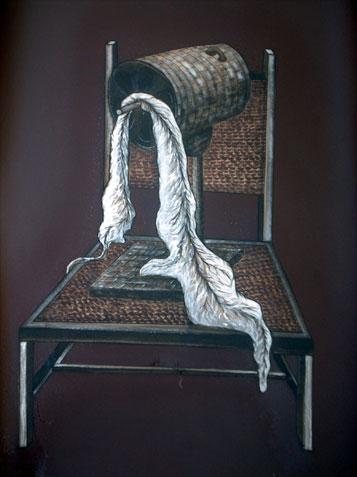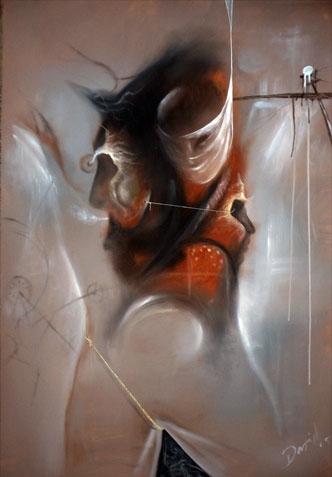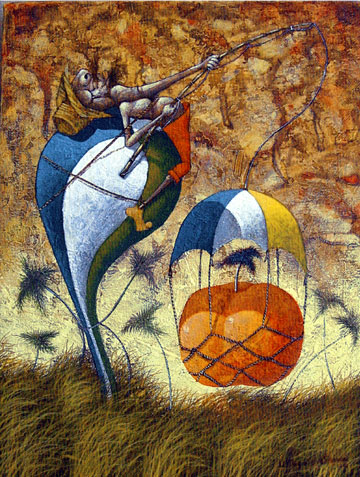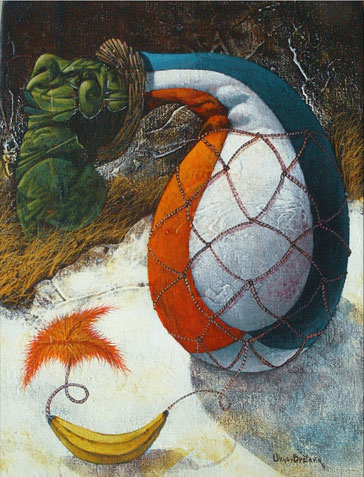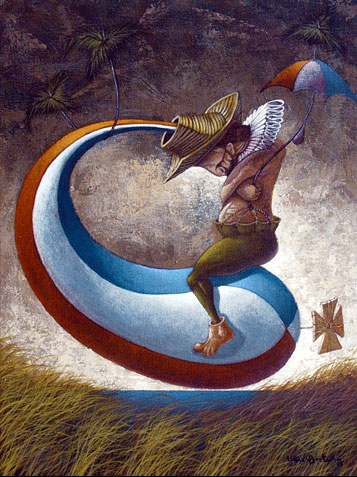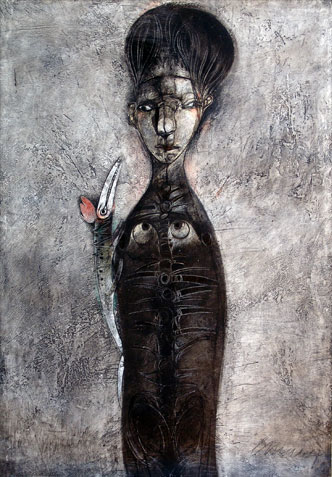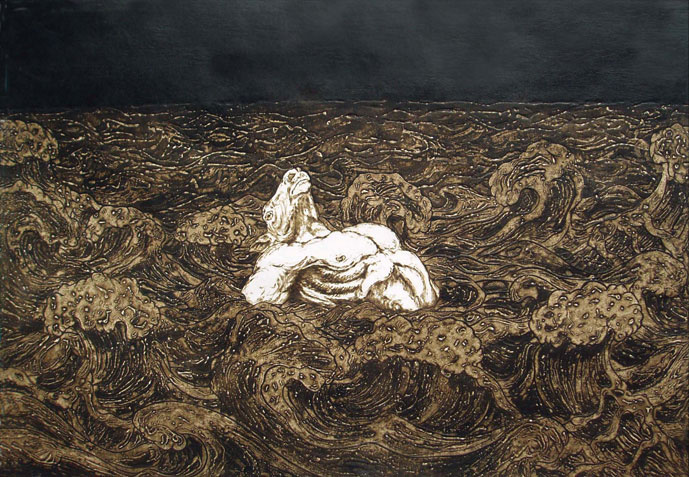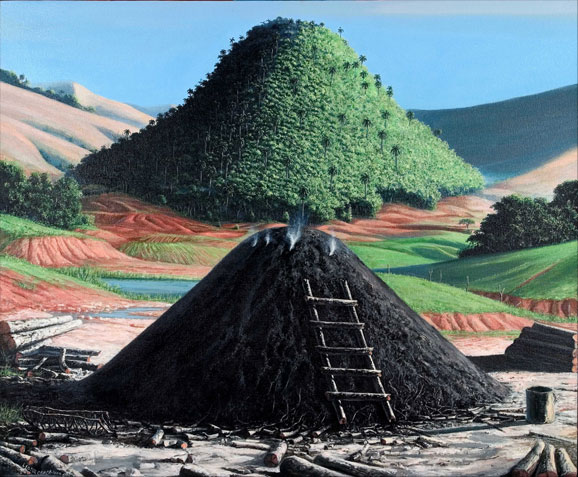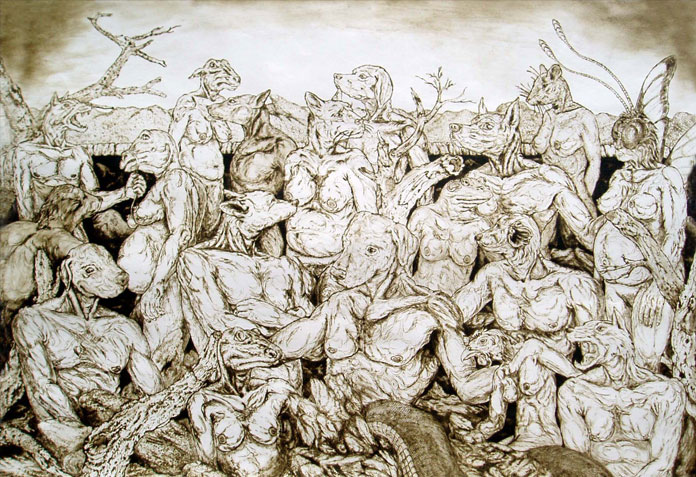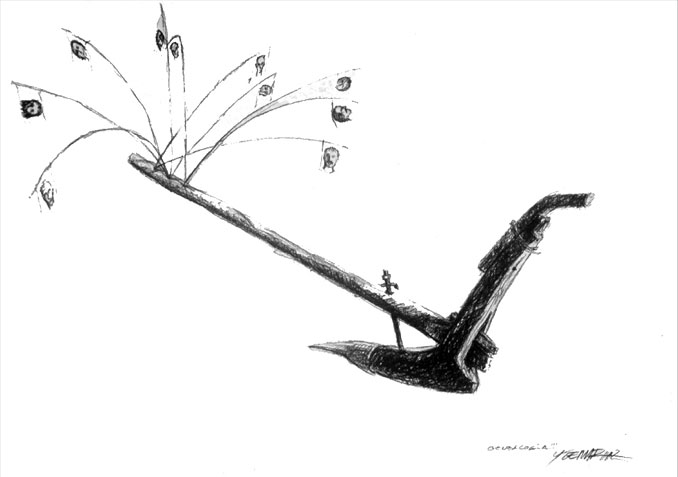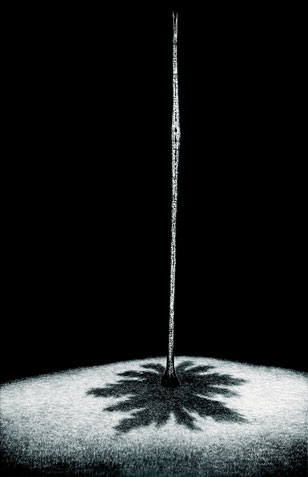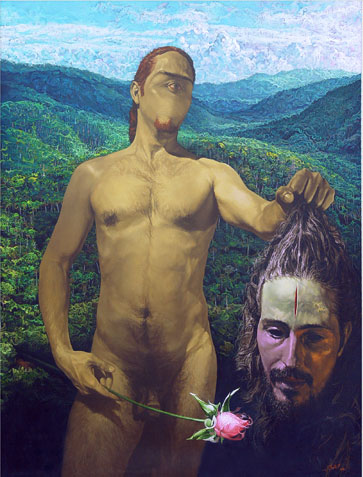2 + 2 Is Not Always… Landscape
From Earnestness to Dissipation and Vice Versa
Almost all facets of life fulfill the moral of Robert Louis Stevenson’s characters. The famous duet of Dr. Jekyll and Mr. Hyde is an eloquent parable of human nature, always struggling from time immemorial between the forces of good and evil. No human being is totally good or totally evil; instead, each one has different doses of both. That is why it amuses me to see opposed attitudes in individuals who boast of their integrity and humanitarianism, and many times it even happens to us with regard to them as when we read The Strange Case of Dr. Jekyll and Mr. Hyde, that in the end we sympathize with that type of character.
Thanks to that ambiguity that exists in daily life sometimes the extremes of human attitudes meet. And art is not strange to this situation, even more when it is submitted to all kinds of pressures: social, cultural, economic and political. Already for the past few years the Cuban art scene has ceased to be the face of the Island despite the efficient critical sense that accompanied it for a long time. From a profoundly questioning art we have become a different art that is often acquiescent. At least according to that other method we learned about our social problems, our lack of initiative, our limitations; however, now we witness an art that simulates simulation; that does not comment on the problems because it has changed its course and ignores its final destination. A hermetic or playful art, foreseeable or pseudo industrial that in some cases has become the international image of Cuban art, the same one that today allows itself the luxury of being light. A fine luxury it is!
This situation has resulted in an emptying of meaning in the art production that at a certain point has been euphemistically considered as change or crisis, but which is truly nothing but the total apathy present in the artists given the country’s economic precariousness and the weakening of the Cuban institutional system. The reorganization that has taken place in the latter in search of access to the market is still insufficient, and the artists living outside the capital are deprived of options despite their attractive production.
2 + 2 no siempre es paisaje (2 + 2 Is Not Always… Landscape) pretends to be a sample of the different forms assumed by the art creation under the present conditions in the country. In this case influenced by the distance from the capital and emphasizing in escaping from the cliché that Pinar del Río is a province where the landscape predominates over any other genre or trend. Such tendentious opinion underestimates the most interesting creative segment in the region, which for a long time has been displayed in the form of installations, mainly of objects and performances.
The artists who make up this exhibition have maintained a work characterized by the experimentation and questioning in every aspect. The supports are diverse, and in those art works in which we could say there is an approach to the landscape, the genre is no longer the plain recreation of the environment in order to become a vision enriched by the conflicts of the contemporary individual in his relations with the environment. May this attempt help to erase the label of Pinar del Río Landscape School, which has influenced the standardization of a group of proposals in other trends with a zeal in the making capable of calling the attention of more than one jury in provincial and national contests.
The dual discourse is also present in the works by Gastell, who is interested in adopting an irreverent attitude but pretends circumspection; Oliva, whose lyrical style continues to produce examples of formal excellence and unique poetry; and Lorenzo, known by the zoomorphism of his characters as pretext to broach the theme of the insularity. On the other hand, the landscape in the hands of Campa, Vázquez and Humberto has been reformulated in such a way that it enables them to activate the reflection of cultural, social and ecological nature.
In a different order are the existential considerations contained in the art works by Marcos González and David Santa Fe, who, through the fragmentation of their figurations, comment on the isolation and depersonalization of the contemporary individual. The former belongs to a group of artists who have developed several initiatives in favor of the revival of engraving in Pinar del Río, still lacking a workshop to consolidate the future of this genre. Santa Fe, in turn, grants a certain phantasmagoric air to his characters, halfway between real and oneiric.
The point-blank commentary, so much forgotten in our circles, is significantly activated in Céllez’s work. His neo-expressionism boosts self-portrait to present global affairs of the individual in a private atmosphere. Generally speaking, Cuban art has become subtle, simulating, due to the influence of the market; Elvis, however, has succeeded in attracting the attention of the critics with a totally open attitude, employing an art form with no half-baked ideas that moves everyone.
The diversity of themes, supports and tones of the pieces characterizes these authors who live and work 147 Km away from the capital, although they may not be too well known in the national art circuits. Here there is only what you see; they make no tricks to seem correct. Some more attached to tradition, others more uninhibited, they coincide in the wish to play with the borders of the genre, and as a group they have evidenced versatility throughout their careers.
A large part of the art made in Cuba today suffers from superficiality under the deceptive veil of minimalism, abstraction or conceptualism, and even the art critique (and that is the worst part) has agreed to make the praises. This has existed in all periods and places, but in this context it has been harmfully enthroned. It is necessary to learn, once and for all, that in art, 2 2 is not always 4. And we Cubans are characterized by mistrust.
Amalina Bomnin
(Summer holidays, 2005)
Artworks
Series Mas-querade
David Santa Fé 2005Serie Guájaros
Carlos Ulises Bretaña Hevia 2005Rest
Ramón Vázquez León 2005Body Awareness
José Miguel (Mayimbe) Díaz Pérez 2005The Heat I Feel
Miguel Ángel Couret 2005Serie Guájaros
Carlos Ulises Bretaña Hevia 2005Serie Guájaros
Carlos Ulises Bretaña Hevia 2005Serie Guájaros
Carlos Ulises Bretaña Hevia 2005Series Mas-querade
David Santa Fé 2005The Family
Ramón Vázquez León 2005Night Girl
Pedro Pablo Oliva 2004One and More
José Luis Lorenzo 2004Life and Death
Lester Campa Melo 2004Warrior, Give Me Light
Luis Roque Contino 2004Eighteen and More
José Luis Lorenzo 2004Confessions
Juan Artemisa Suárez Blanco 2003The Being and the Time
Juan Carlos Rodríguez 2003Genealogy
Yoemir Alfonso Almeida 2002I Still Masturbate When I Think of You
Elvis Cellez González 2002The Enigma of Light
Marcos González Yaver 2002Untitled
Lester Campa Melo 2002Artists

